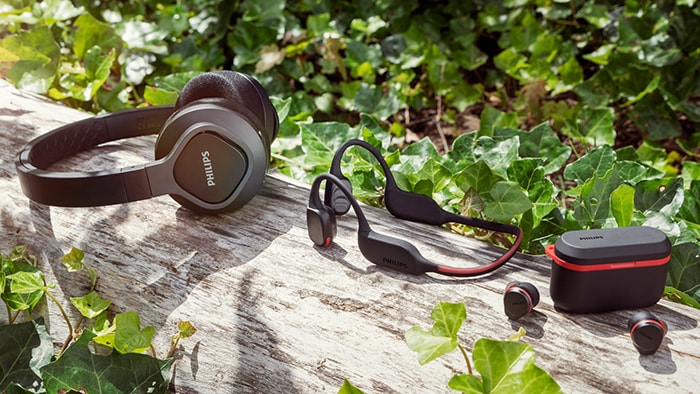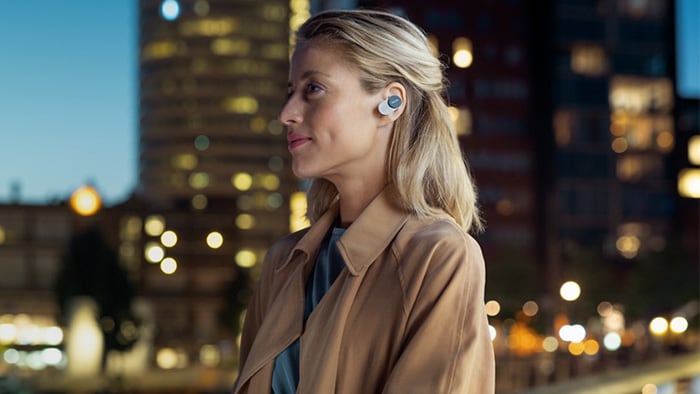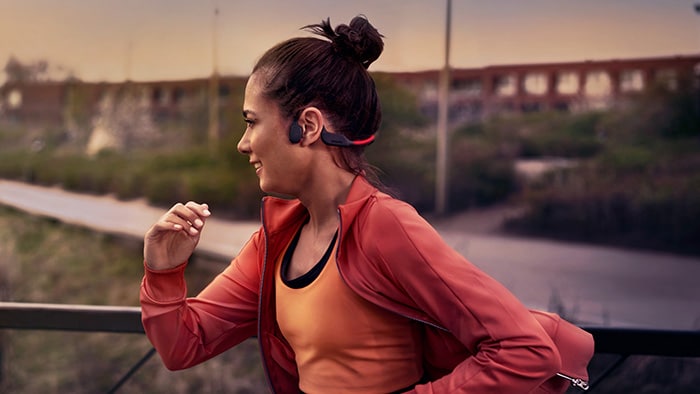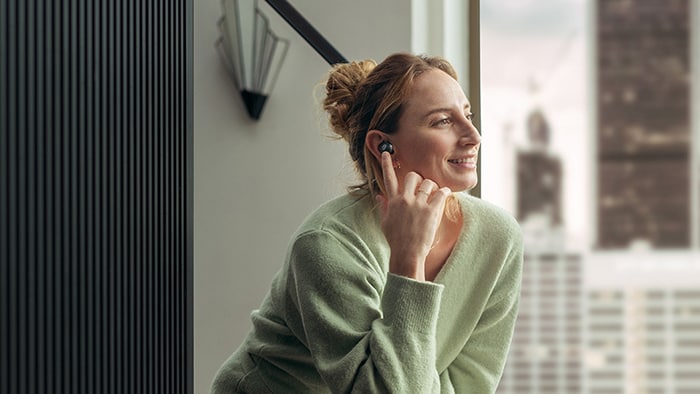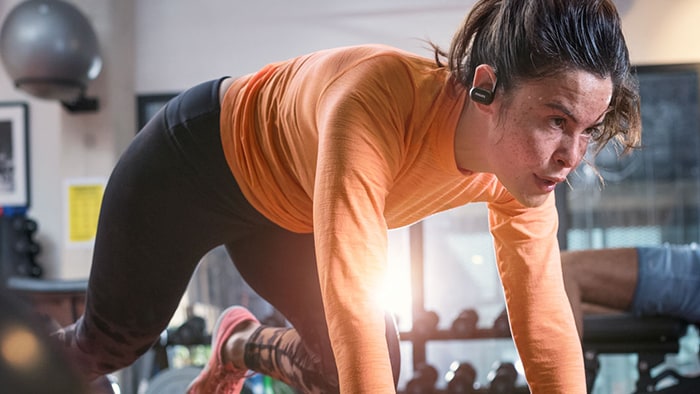The quick guide to kids' headphones
Thinking about getting your kids their own pair of headphones? Perhaps you’re yearning for some respite after hearing their favourite song, story, or show for what feels like the millionth time! Or perhaps they need a pair of headphones for school, or you want to help your kids concentrate on educational content at home without you disturbing them.
From toddlers to preteens, headphones can be a great way for kids to get some independence and privacy, but finding the right pair can be tricky. To start with, your list of concerns might be different from theirs. You want to protect their hearing and your sanity. They want the same ones as all the cool kids are wearing or—depending on their age—they might have very strong ideas about the colour!
Read on to discover more about the different types of kids’ headphones, and why it really isn’t a great idea to simply let them use your old pair . . .
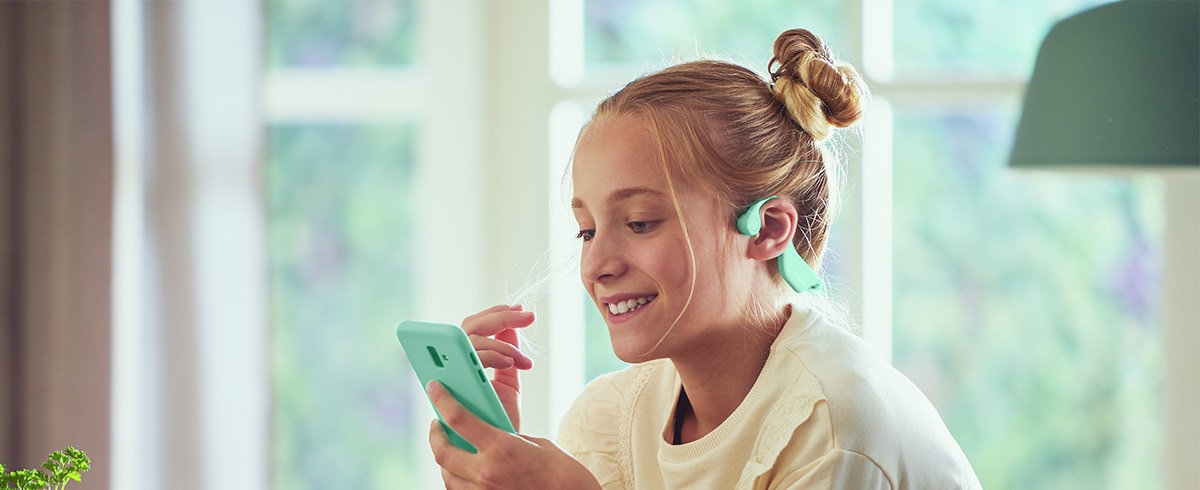
Do kids really need their own headphones?
If your kids are of an age where they’ve figured out how to ‘borrow’ your phone or tablet, or they simply need a pair of headphones for school or study, you might be tempted to let them use an old pair of yours. But kids’ ears aren’t the same as adult ears—and a pair of headphones designed just for kids might actually be your most important tech purchase this year.
The best headphones for kids will include one feature above all else: they will be designed to protect your child’s hearing while still delivering a decent listening experience. Naturally, they should also offer a comfortable fit for smaller heads, and it helps if they’re pretty tough!
What to look for in headphones for kids
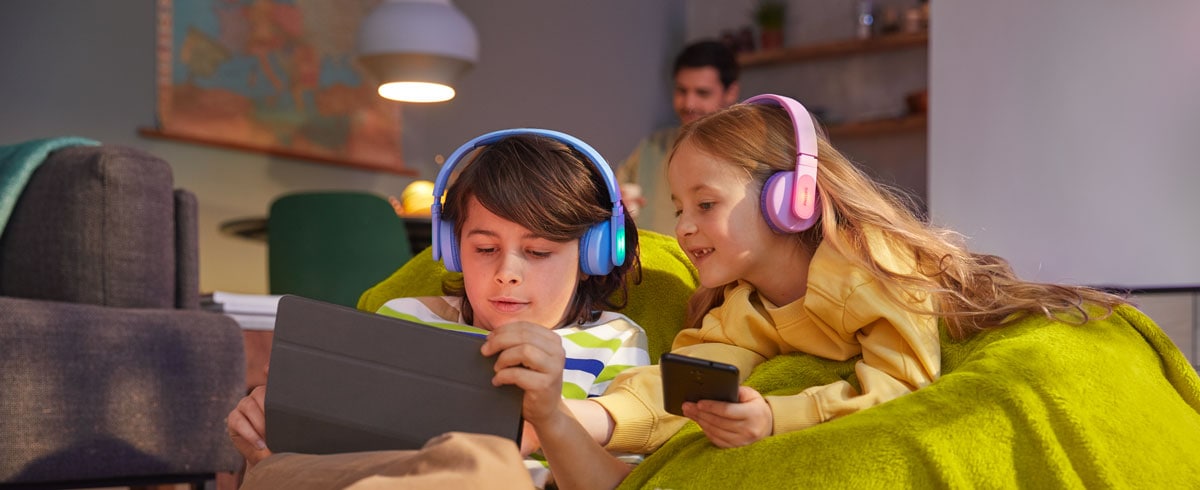
The top things to consider when looking for a great pair of headphones for kids include:
Limit the volume. Protect the Ears!
Protecting your kid’s hearing is going to be your number one priority. Children’s ears are still developing. Their ears are more sensitive to noise due to the ongoing development of nerve fibres and other cells. They also have smaller ears and shorter ear canals than adults: because of their smaller external auditory canals, the eardrum is closer to the sound source and sound has a greater impact.
Exposure to loud sounds can cause damage to the sensitive hair cells in the inner ear, and this can lead to hearing loss over time. This is exactly why the best headphones built for kids come equipped with volume-limiting technology, which can help prevent hearing damage by keeping sound at a safe level.
What volume should kids’ headphones be set at?
You’re going to want to look for headphones with a volume limit of 85 dB or less. That’s the maximum level recommended by the World Health Organization (WHO) as safe for prolonged listening.
By comparison, most adult headphones peak at around 115 dB, and some go as high as 136 dB! By limiting the volume, headphones designed for kids can help protect a child's hearing as they grow.
Alongside choosing the right headphones for your kids, it’s also a smart idea to start teaching them about safe listening habits as soon as they start using the headphones.
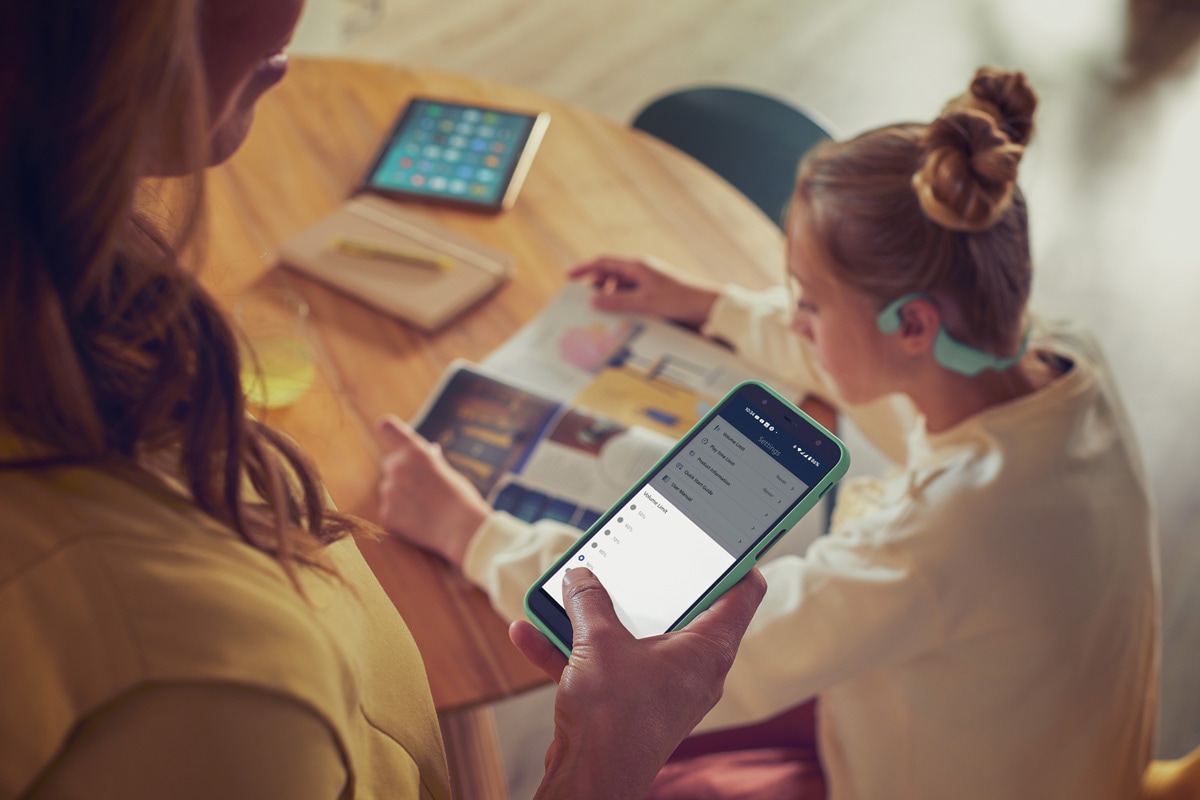
Encourage safe listening habits
Ready to lead by example?
Top tips for cultivating safe listening habits in children include limiting the amount of time spent using headphones, taking regular breaks while listening, and explaining to them why it’s important to limit the volume.
We’d be the first to admit that leading by example might not be as easy as it sounds. If you like to spend hours immersed in your favourite sounds, or you regularly walk around with your earbuds in (even while you’re not listening), you might want to consider taking those headphones off more often when the kids are around. It’s a small price to pay for protecting their ears—and preserving your sanity as they get to enjoy their favourites on repeat!
Tips to encourage safe listening
Look for kids’ headphones that offer parental control
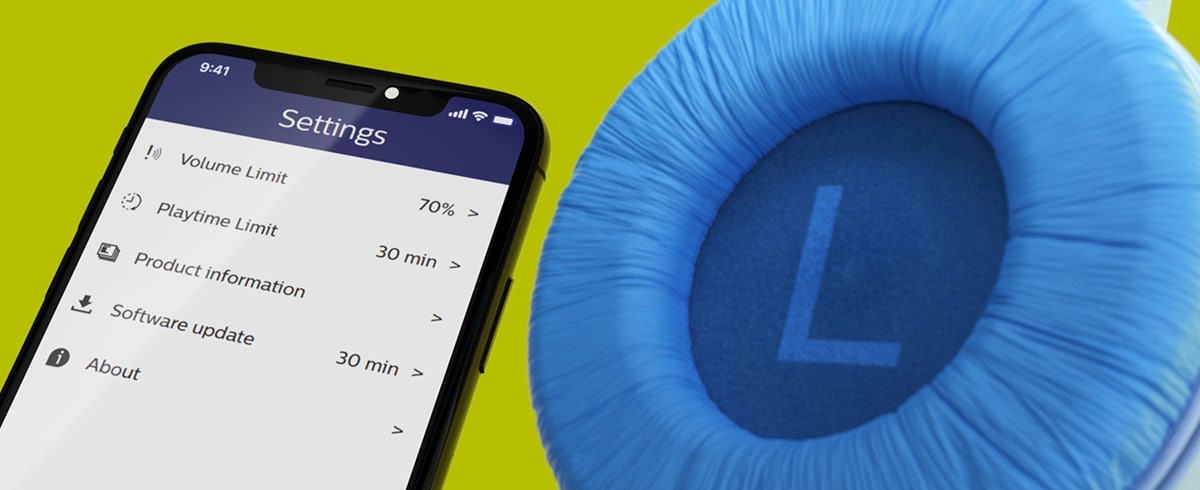
It makes a lot of sense to consider headphones that have additional measures to stop kids from exceeding the volume limit, or their allocated play time!
Kids’ wireless Bluetooth headphones from Philips are compatible with the Philips Headphone app, which firmly puts you in control of audio levels. Download the app to your phone and you can use it to limit both volume and playtime.
All Philips headphones designed for kids have the volume limited to 85 dB, but you can use the Philips Headphones app to set a lower limit for more sensitive ears. You choose the volume limit based on a percentage: for example, if you choose 60 %, the volume will gradually be lowered to 60 % of 85 dB.
You can also set playtime so the kids don’t listen for too long. When playtime’s up, the headphones will stop playing.
Form and function: Which kind of headphones are best for kids?
Headphones are functional gadgets, so is there a ‘best’ when it comes to the style of the headphones you get for your kids?
Ultimately, the best headphones for kids will depend on the child's needs and preferences. So long as the headphones you get are volume-limited and comfortable, the rest is entirely preferential. So how do you choose?
It sounds obvious, but it’s well worth taking the time to consider when your kids will be using the headphones, and to what kind of devices the headphones will need to connect. Another obvious but easily forgotten tip is to check the age range recommended by the headphone manufacturer.
Also, always check whether the ear cups and headband or neckband are adjustable. That way, the headphones can keep up with your child’s growth spurts.
Go for on-ear or open-ear headphones, and avoid earbuds for younger kids
When it comes to the form factor of the headphones, we’d say that lightweight on-ear or open-ear headphones designed for kids have the most going for them.
Over-ear headphones completely cover the ears and can provide better sound isolation than on-ear headphones. While this can help prevent a child from feeling like they want to turn the volume up—if they’re listening, say, on a noisy bus—over-ear headphones can also be bulkier and heavier, which often won’t be as comfortable.
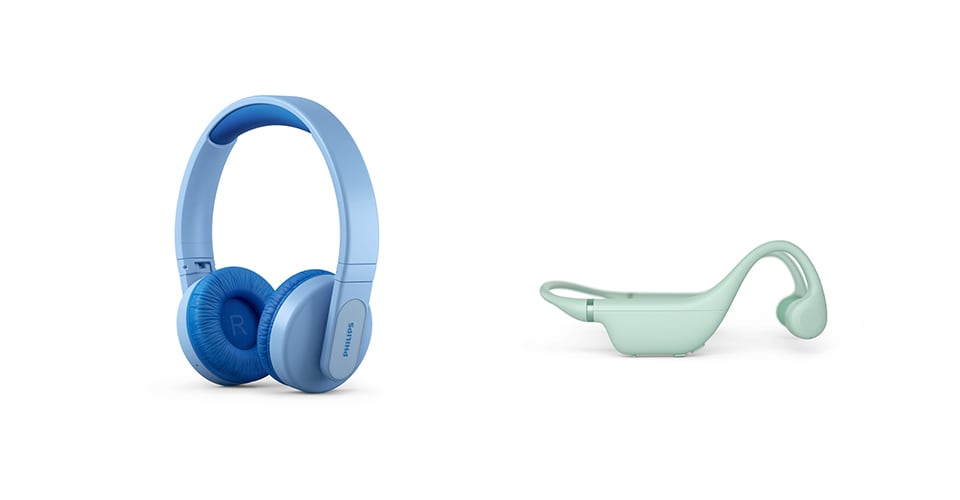
On-ear headphones are typically smaller and lighter than over-ear headphones. They feature ear cups that sit on top of the ears, which can be a good option for children who don't like the feeling of over-ear headphones completely covering their ears.
And then there’s the new kid on the block—open-ear headphones designed for kids. Also known as bone-conduction headphones (or even ‘off-ear headsets’), open-ear headphones are great for kids who don’t like the feeling of anything in or on their ears, as well as those who don’t like wearing a headband. They’re wireless, too, so they’re also excellent for active kids.
What about earbuds, though? We wouldn’t recommend them for younger kids. Wired, wireless, or true wireless, earbuds need to be inserted into the ear canal, which can increase the chance of damaging a young child’s hearing. Hygiene also doesn’t tend to top the list of concerns for many young kids and remembering to put earbuds back in their case after use is important. If earbuds are left lying around (or shoved into a pocket or bag) when they’re not in their case, lint and dirt can get stuck to them and end up in your kid’s ears. There’s an obvious risk of infection there, which is easily sidestepped by avoiding earbuds until a child is old enough to remember to store earbuds in their case when they’re not using them.
What are open-ear headphones for kids?
So what about those open-ear kids headphones we mentioned? Wireless open-ear headphones for kids are a new innovation that are getting a lot of attention for being super comfortable and super safe. We couldn’t agree more.
Why are they so safe? To start with, it’s all about the design. There’s no headband or ear cups, and users don’t need to put an earbud into their ear. Instead, open-ear headphones sit outside the ear canal. They rest just in front of the ear and transmit sound via the cheekbones using bone-conduction technology. This clever tech means no sound is being played directly into your child’s ears.
Comfort wise, open-ear headphones don’t require a tight fit, so they're less likely to cause discomfort or irritation. Plus, the fact that open-ear headphones don’t go into, or even onto the ear, makes them particularly hygienic—which can only be a bonus!
With no ear cups covering their ears, the other great safety benefit to open-ear headphones is that kids can hear external sounds at the same time as they’re listening to their headphones. If your child wants to play music when they’re outside, they’ll be more alert to what’s going on around them (traffic, for instance). Inside, they’ll still be able to hear you telling them it’s time to take a break!
How to find comfortable headphones for the kids
Comfort is an important feature. It’s no use getting headphones that adjust to accommodate your child’s growth spurts if they’re not going to be comfy to wear.
Headphones designed for kids will invariably be lightweight, but it’s still worth comparing different models to find the lightest. You’ll also want to make sure that the headphones offer a secure fit, so they don’t fall off.
What to look for in on-ear headphones
The most comfortable on-ear headphones for kids will feature soft adjustable ear cups, as well as a padded, adjustable headband. The padding helps relieve any pressure on the head or ears, and the ability to adjust the size means the headphones can grow with your child. You’ll want to make sure that the headphones fit when they’re at their smallest size, then you can adjust to make them bigger as time passes.
How do you know when it’s time to adjust on-ear headphones? Obviously, if your kid tells you they’re hurting, it’s time! But, if there’s no obvious pain from the headphones becoming too tight, they might not notice.
An easy way to make sure the headphones aren’t putting too much pressure on their growing ears is to have your kid wear them for a short time and then check whether there’s any redness or pressure marks. If there are, you’ll need to adjust the cups and/or the headband to a larger size.
Are open-ear headphones comfy?
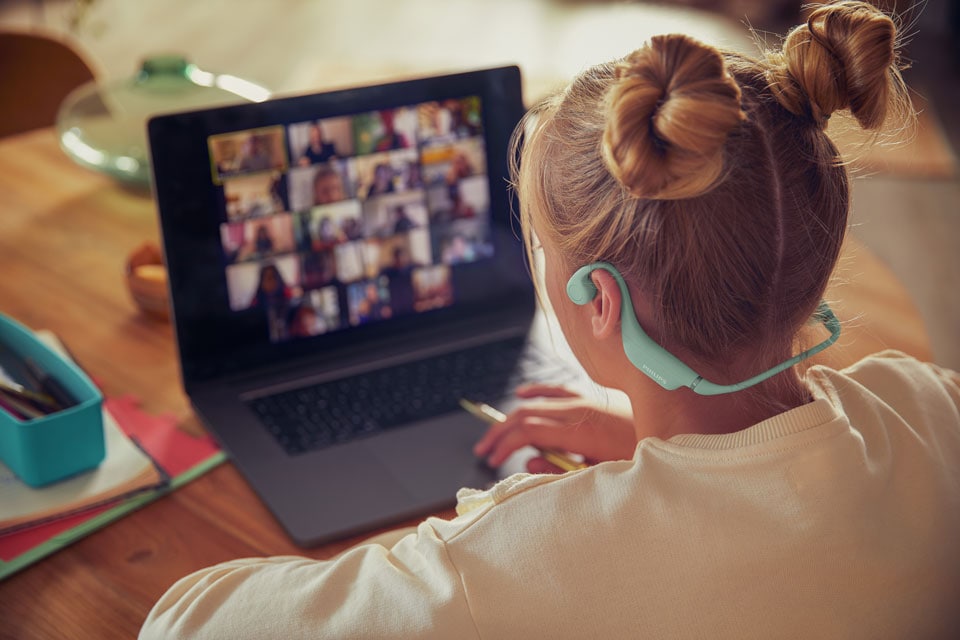
Open-ear headphones for kids come with a great comfort advantage built-in: there’s no ear-cup to go on or over the ear. If your child doesn’t like the feeling of having their ears covered, open-ear headphones are perfect.
Obviously, a child’s head is smaller than an adult head, which is why it’s important to buy open-ear headphones specifically designed for children. In addition to that 85 dB volume limitation, kids’ open-ear headphones are built to snugly hug a child’s head. Adult open-ear headphones will fall straight off.
Philips open-ear kids’ headphones have a flexible neckband with a springy titanium core. This allows the headphones to ‘hug’ your child’s head—keeping them gently but firmly in place. The neckband also loops up over the ears, so the headphones won’t slip down.
Can any headphones really keep up with your kids?
Whether you go for on-ear or open-ear headphones, it pays to remember that kids are kids, and they’re not always careful with their gear!
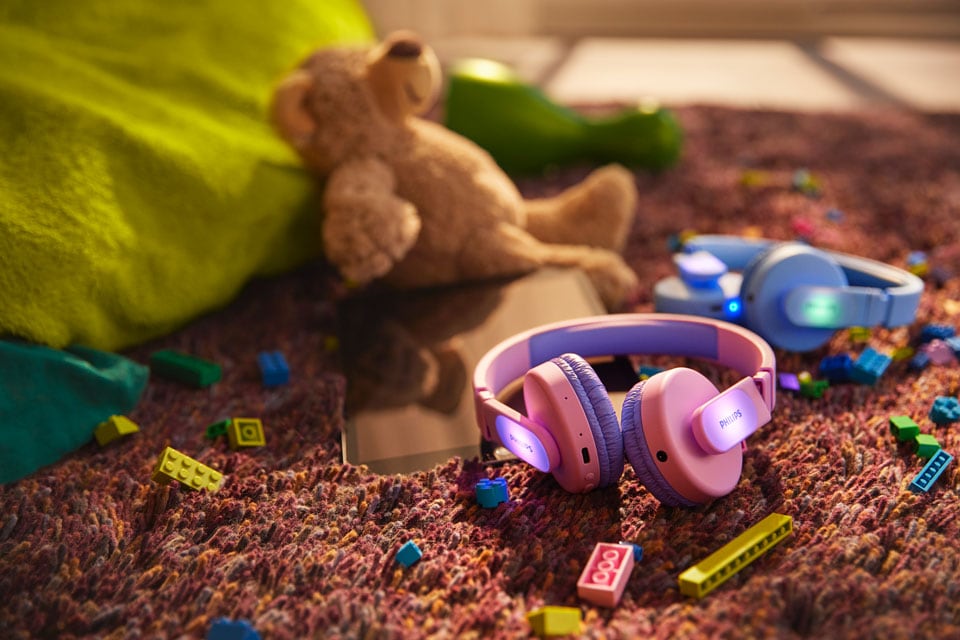
Share their headphones with friends? Sure. Throw them in their backpack before putting other stuff on top? Why not. Accidentally spill their drink over them when the school bus, or your car, comes to an abrupt stop? It happens.
If making sure your child’s headphones are volume-limited and comfortable is important, making sure they’re robust enough to withstand your kid using them is surely going to be up there too.
Are they tough enough?
Admittedly, it can be hard to tell just how just how strong a pair of headphones are until you have them in your hand.
If you’re shopping online, some things to look out for when considering whether a pair of headphones are going to be sturdy enough include:
Headphone style? Ask your kids
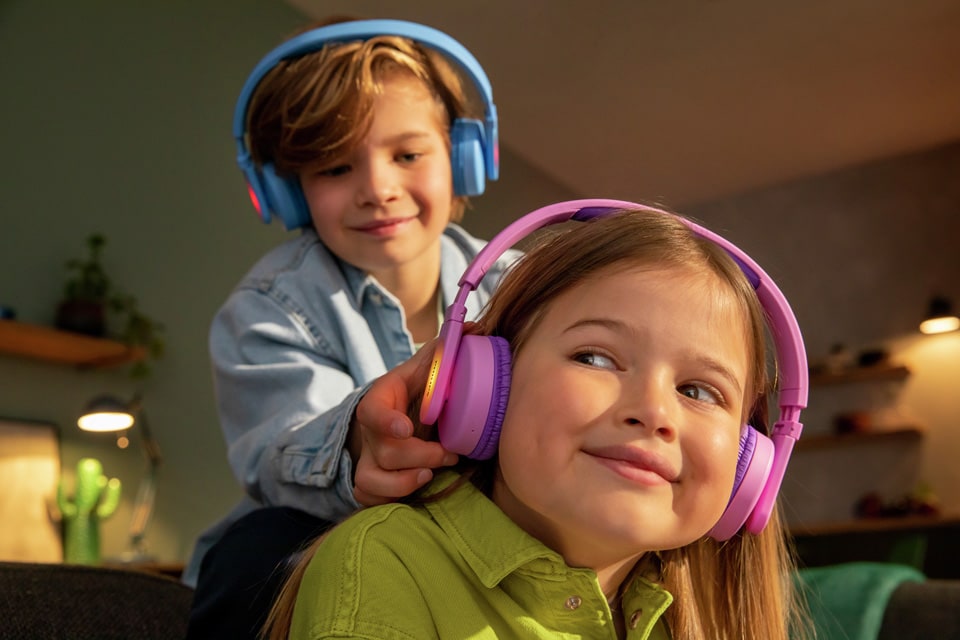
It’s well worth talking to the kids about what they want! You may think you know. But do you? You might feel pretty sure a younger child would want a brightly coloured pair, only to discover that they think the bright colours are ‘too childish’. Or that their favourite colour has changed since yesterday. And who knows whether an older child wants nothing more than headphones that light up, or when tweens are going to start thinking that wired models are cool again!
It’s also a smart idea to check whether the headphones your kids want are compatible with their devices. After all, a child might ask for a wired pair without realizing that the devices they use don’t have a headphone jack.
So there you have it! Kids’ headphones come in all sorts of designs—in ear, on ear, open-ear, wireless, and wired. Headphones designed for kids should always be volume limited, and as long as you limit their listening time they’ll be safe for young ears.
Comfort means they feel good now, and they can be adjusted as your child grows. For younger kids, we advise on-ear and open-ear models as they’re generally more comfortable (and hygienic in the case of open-ear headphones!).
If you want them to last, it’s best to go for a pair of kids’ headphones that have some toughness and flexibility. In terms of colour choice, we’re sorry to say that you’re on your own there. Best go ask the kids.
Philips wireless on-ear vs open-ear headphones for kids
| | On-Ear | Open Ear |
| Safety | Volume limited to <85 dB. | Volume limited to <85 dB. |
| Comfort | Adjustable headbands let the headphones grow with the kids. | With nothing covering the ear, open-ear headphones are lighter and less restrictive of head movement. |
| Awareness | On-ear headphones block out some external sounds because of the ear cups. | Open-ear headphones let kids hear everything that’s going on around them. |
| Durability | Built with kids in mind. | Built with kids in mind. |
| Design | Colourful ear cups which light up on some models. | Simple and futuristic-looking! |
| Sound quality | Good sound with a balanced sound profile (not too much bass!). | Sound quality can be lower than with on-ear headphones. The bass won’t be too strong. |
| Ease of use | Simple to use. | Simple to use. |
-
Kids wireless on-ear headphones
TAK4206BL/00
- On-ear wireless headphones
- Light-up ear cups
- App-based parental controls
- Volume limited <85 dB
-




